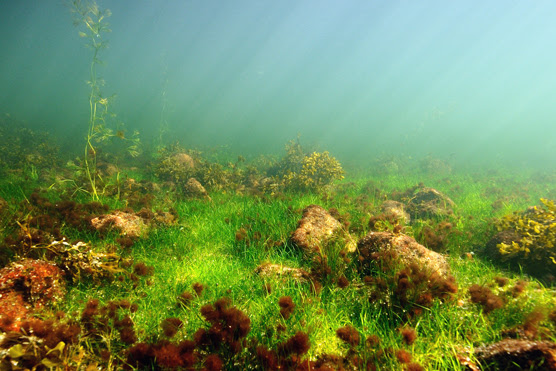Rising temperatures, ice conditions impact Baltic Sea ecosystem
Published : 12 Apr 2022, 02:41
Rising temperatures and ice conditions have many impacts on the Baltic Sea ecosystem, according to a comprehensive review of the effects of climate change on the Baltic Sea.
The temperature of the Baltic Sea will continue to rise and the ice conditions will continue to ease, but it is unlikely that winters will be completely free of ice, said the review, which compiled all scientific literature related to the Baltic Sea and climate change from 2010–2021, said the Finnish Environment Institute (SYKE) in a press release on Monday.
Kai Myrberg, a leading scientist at SYKE, is the second lead author of the review on salinity. Salinity has a key impact on the ecology of the Baltic Sea. According to Kai Myrberg, studies have confirmed that there will be no major changes in the frequency of Major Baltic Inflows due to climate change, but that natural variation will continue to occur in a cycle of about 30 years.
“The main reason for the poor oxygen situation in the Baltic Sea bottom is the long-lasting nutrient load, but the increase in water temperature caused by climate change and the consequent increase in oxygen consumption can make the situation even worse,” Myrberg said.
“However, the development of the oxygen conditions is difficult to predict, as salinity and temperature stratification also contribute to this, and there are a lot of uncertainties connected to their estimation,” Myrberg added.
The review pertaining to the Baltic Sea ecosystem has been conducted entirely by Finns. The authors are Research Professor Markku Viitasalo of SYKE and Professor Erik Bonsdorff of Åbo Akademi University.
They went through over 250 studies published between 2010 and 2021 on the effects of climate change on ecosystem functions and species, including phytoplankton and zooplankton, cyanobacteria, plants, macroalgae, benthic animals and fish.
For example, studies show that the spring bloom of phytoplankton has already moved to start earlier and the length of the growing season has even doubled.
Increasingly frequent heat waves can also affect the Baltic Sea ecosystem. When the species' tolerance to temperature, acidity or salinity is exceeded, the species suffer.
During the most severe heat waves, for example, the assimilation of bladderwrack is stopped and some of the eelgrass’ shoots die. Out of the fish, European sprat and pikeperch, for example, are likely to benefit from warming and eutrophication.
Climate change can also create phenomena similar to eutrophication.
“For example, a heat wave can kill the small crustaceans in the algae zone, so that, in the absence of grazers, the filamentous algae burst into growth and cover the bladderwracks in masses,” Viitasalo described the complex effects of climate change on the food web.
The situation for benthic animals is also more complex than expected. On aerobic soft bottoms, benthic animals are initially predicted to multiply, but later their numbers will start to decrease, at least if the nutrient load is reduced successfully.
When nutrients are reduced, the organic matter that sinks to the bottom is also reduced, which leads to a reduction in the nutrients for both the benthic animals that feed on the bottom and the fish.
Although there are still uncertainties, it is likely that the structure of the ecosystem will change. The potential impact of climate change on eutrophication is of particular concern.
Climate change is predicted to increase the amount of nutrients flowing from land. As the temperature also rises, the decomposition of organic matter caused by microbes accelerates, and the lack of oxygenation can increase in many places, especially at the end of the summer, both at the deep bottoms and in the shelter of the archipelago.
In anoxic conditions phosphorus is released from the bottom sediment, accelerating the vicious cycle of eutrophication. In particular, cyanobacterial blooms are projected to increase, although uncertainties are also associated with this forecast. However, model studies have shown that direct human activities have a greater impact on the state of the Baltic Sea than climate change.
“If the Baltic Sea states implement the HELCOM program of measures and cut nutrient loading as planned, the condition of the Baltic Sea is expected to improve significantly by 2100,” said Markku Viitasalo.
Research is the key to a better future for the Baltic Sea. The Baltic Sea is a very special sea, and it also reacts to climate change in its own way.
“The Baltic Sea is warming faster than other seas in the world, and many of the ecosystem effects of climate change that are happening slowly in the oceans are already visible in the Baltic Sea. It is not known how the Baltic Sea's diverse food webs may adapt to future changes,” Erik Bonsdorff said.
The new review is the third assessment of the linkages between climate and the Baltic Sea. The review has been published in an extensive special issue of the Earth System Dynamics journal. The articles in the review cover, among other things, the extreme weather events caused by climate change and their impact on the Baltic Sea, the projections of climate models up to 2100, and the effects of climate change on the Baltic Sea's oceanography, nutrient dynamics and marine ecosystem.
About 120 scientists, mainly from the Baltic Sea states, participated in the preparation of the articles. Several Finnish scientists also participated in the work.


